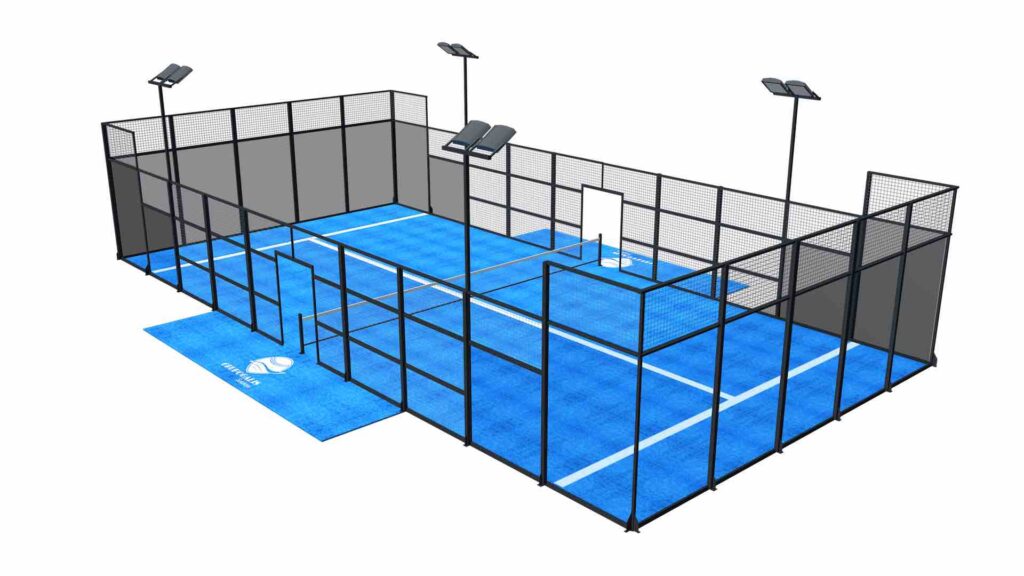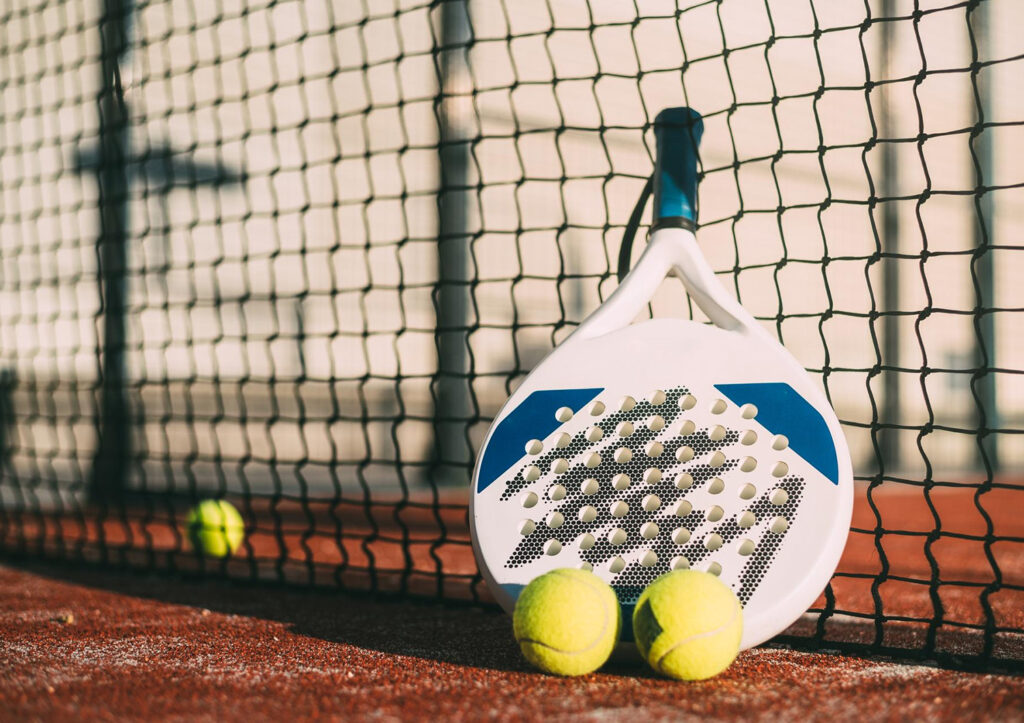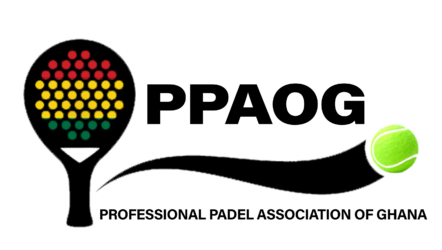
PPAOG
Unveiling the strategic initiatives and development plans of Padel in Ghana
Our mission at the Professional Padel Association Of Ghana is to foster the growth and appreciation of Padel across all levels of play. We commit to cultivating a welcoming community, promoting competitive excellence, and advocating for the integrity of the sport. Through innovative initiatives, comprehensive development programs, and dedicated partnerships, we strive to ensure accessibility, encourage sportsmanship, and uphold the highest standards of training and competition. We are dedicated to inspiring participation and passion for padel, enriching lives through the joy of the game, and establishing a global legacy for future generations.
Vision
We want to be part of the worldwide Padel family and make Padel a sport that is recognized and played in Ghana and internationally through the Ghana National Padel Team.
Unveiling the strategic initiatives and development plans of Padel in Ghana.
In November 2022, we introduced Padel to Ghana by building two courts and investing heavily in social media to generate awareness for the fastest-growing sport globally. This investment extended to coaching, particularly targeting young tennis coaches and players, successfully transitioning them to Padel. Leveraging the international trend of the game, we cultivated interest and created a thriving community around Padel in Ghana. This effort culminated in the establishment of Official certified Ghanaian Padel coaches. Subsequently, we organized the inaugural Ghana Padel Championship last year, comprising four tournaments and a national ranking system. The community has flourished, growing from a handful of players to over 700 within one year, with expectations of surpassing 2000 players by the end of 2024.
Board Members
The PPAOG Board of Directors (BOD), comprised of members with a collective passion for Padel and an average age of 39, have been appointed to put the PPAOG’s plans into effect. Here-under is a list of the current BOD:

President
Jean Noel Said

Vice - President
Nour Seklaoui

General Secretary
Tamimu Issah

Treasurer
Nassif Seklaoui

Exco Member
Vincent Azong-Bion

Exco Member
Senanu Morti

The Game
What is Padel
Padel is a racquet sport that generally follows the rules of tennis, but it has four walls like squash which makes it different. It’s played inside an enclosed court, so there are less limits to where you can hit the ball.
If you are already playing tennis and enjoy it, chances are that padel will also appeal to you. The foundation of the game is based on good positioning and strategy, using speed and accuracy to place the ball where it will put your opponent under pressure.Quick Facts about Padel
- Padel is played in doubles. A normal Padel court is designed for four players and is roughly 25-30% smaller than a tennis court. There are also single courts, but it’s less common.
- Padel rules are similar to those of tennis, but you serve underarm. Points are calculated the same as in tennis with points, games, and sets. Tiebreak is used to separate teams at 6-6.
- Padel balls are smaller and has less air pressure than tennis balls.
- Padel racket: Solid with no strings. The racket has to be perforated.
The Padel Court
The court is enclosed and is surrounded by walls of glass and metallic mash. The dark grey areas in below image indicates what on the court that is glass. The ball can bounce off any wall but can only hit the turf once before being returned.

Dimensions of the court
The Padel court is 20 meters long and 10 meters wide, with back walls of glass up to a height of 3 meters, whereas the glas side walls end after 4 meters.
The walls might be made of glass or another hard substance like concrete. A metallic mesh at a height of 4 m is used to finish the rest of the court.
There is a net in the center of the court that separates it into two halves. The maximum height is 88 cm in the middle, with 92 cm on each side. A line runs down the center of these fields. The service zone is defined by another three-meter line from the back wall.
The padel racket
- Round
- Drop-shaped
- Diamond-shaped

Padel balls
One of the most common misconceptions is that a padel ball is the same as a tennis ball. It is not! A padel ball is slightly smaller and has less pressure which alters how high the ball with bounce.
Quick rules to get started
- The lines on the court are used only at the serve (service line).
- The serve may not bounce up in the fence but it may bounce up in the glass walls.
- If you are the server, you have two serves to complete the serve. The first serve, and the second service. Missing both gives away a point to the opponent and is called “a double fault” (two consecutive service faults) as in tennis.
- The points count (15, 30, 40, game) works the same way as in tennis.
- Playing volleys are allowed but not directly on the return of the serve.
- The serve is hit diagonally underhand and should bounce in the opponent’s server box.
- You can hit the ball in the glass wall on your own half of the field before it reaches the opponent’s half of the field.
- You must not hit the ball in the fence on your own side.
- You can let the ball bounce in the fence and glass wall before you hit it.
The scoring system / point system
The scoring system for padel is exactly the same as for tennis. You normally play a game in best of three (best of three sets is the official rule) or five sets, and count points (within a game), games (within a set), and sets.
If the score is 40-40 (also called deuce) in a game, you will need to win two more points to win the game. The first point won is referred to as the advantage, and the second point wins the game.
If you first win the advantage, meaning 40 (advantage)-40, and then lose the next point, the score goes back to being 40-40.
There’s also an alternative rule called “The Gold Point” (or El Punto de Oro in Spanish) where no advantage is played. This was first introduced in 2020 on the World Padel Tour to add more excitement and create shorter games.
The first team to get six games wins the set. If the score in a set is 6-6, you play a tie break game to decide who the winner of the set is.
During tie-break, the points “zero”, “1”, “2”, “3”, etc., are called. The “tie-break” will be won by the first players to win 7 points, as long as it is with a 2 point advantage. If necessary, the tie-break continues until this margin is obtained.
The “tie break” will be started by the player whose turn it is to serve, according to the order followed in the set. This player will only have one serve taken from the right side of court.
The following two points will be served by the players of the opposing team respecting the previous order of service and serving from the left. After this, the players will serve two consecutive points until the end of “the tiebreak” always respecting the aforementioned order of service.
Winning the game
You and your partner win the game when you have won two sets (in a best of three sets game) or three sets (in a best of five sets game).
How to win the point in Padel
- You win a point each time your opponent hits the ball directly into their own net.
- You win a point each time the ball bounces twice on the ground in the opponent’s half of the field.
- You win a point if the opponent hits the ball in his own fence.
- You win a point if the opponent knocks the ball out of the court, for example, if it comes outside the court itself or goes directly into one of the walls.
- You win a point if one of your opponents is hit by the ball, e.g. you smash the ball in the back on a player. That’s your point!
How to lose the point in Padel
- You lose a point if the ball first hits the wall before it touches the ground. However, you may shoot the ball into your own wall after it has bounced.
- You lose a point every time the ball bounces more than once on your own half of the field. This also applies to the serve.
- If the ball goes directly into the net on your own side, you also lose a point.
- If ball hits your racket twice in a shot, you lose a point.
- You also lose a point if the ball hits either you or your teammate.
- You lose a point if you do two consecutive server misses (a double fault).
- If you or your opponent touches the net in any way, either with your body or with your racket, you lose a point.
How to serve
When you’re on the serving team, the game is started by serving the ball from the right side of the court. The serve must bounce once on your side of the field before you hit it to the opponents court. You serve diagonal to the other side and must hit it to the left of the center service line (serving from the right).
You score a point if the opponent fails to hit the ball back over the net.
Conclusion
Now that you know the basics of how to play Padel, it’s time to put your skills to the test! To win the game, you’ll need to know how to score points and understand the rules of serve. Make sure you practice as much as possible so that you can dominate your opponents. Good luck on the court!
